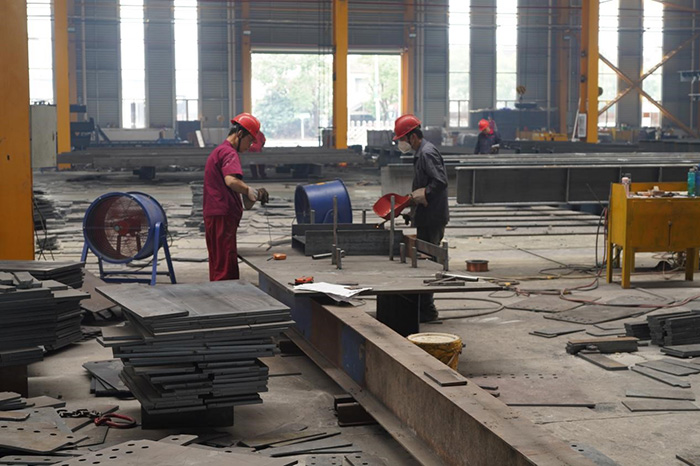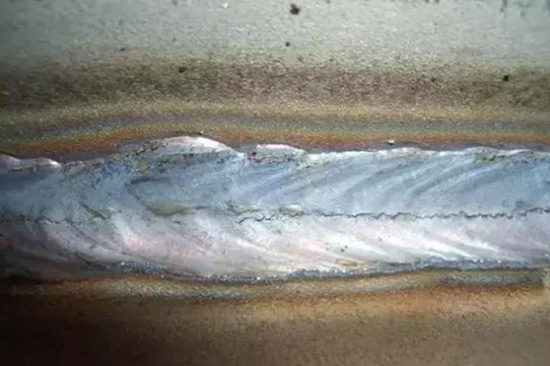8/4/2025
With the continuous advancement of bridge construction technology, steel structures have emerged as a core solution in modern bridge engineering due to their high strength, lightweight properties, and high degree of automation. During the fabrication and assembly of steel structures, welding—as a primary manufacturing process—is widely employed in the production of key components such as steel girders, trusses, and gusset plates. Both welding efficiency and quality critically determine the production schedule, manufacturing costs, as well as the long-term maintenance expenses and service life of the entire bridge structure.

Stress and deformation control standards in welding production:
Stress and deformation control is a core quality requirement in the welding production of steel bridge structures. In the "Specifications for the Fabrication and Installation of Highway Steel Structure Bridges" (JTG/T 3651-2022), 7.2.5 stipulates: The preheat temperature before welding should be determined through a welding procedure qualification test; the preheating range should be 1.5 times the plate thickness on both sides of the weld and no less than 100 mm, and the temperature should be measured within 30-50 mm of the weld. Article 3 of 7.2.7 stipulates that tack welds must be free of defects such as cracks, slag inclusions, and weld bumps, and arc craters must be filled. For cracked tack welds, the cause should be identified before the cracked weld is removed, and additional tack welds should be performed while ensuring the correct component dimensions. Article 1 of 7.2.12 stipulates that after welding is completed, the guide plates, product test plates, or process plates placed at both ends of the weld should be removed by gas cutting, and the cuts should be smoothed. Cutting and smoothing should not damage the parent material. Article 5 stipulates that weld defects should be removed using carbon arc gouging or other mechanical methods. The length of the weld crack removal should be extended 50mm from the crack end. When removing defects, a groove that is conducive to repair welding should be planed out, and the oxide scale on the groove surface should be ground off with a grinding wheel to reveal the metallic luster.
Uneven heating during welding
Welding is a process of heating and pressurizing. However, due to production conditions, the temperature distribution across steel components during welding is extremely uneven. Unconstrained components exhibit free deformation during heating and cooling, resulting in no internal stresses during the heating process. Furthermore, after cooling, deformation and residual stresses are naturally absent. Similarly, constrained components also experience internal stress and deformation during heating. Constrained components exhibit non-free deformation, resulting in both internal and external deformation.

Generally, during the manufacturing process of steel components, the deformation of the component may differ from the deformation after welding. This is because during welding, plastic welding deformation occurs near the weld, and during cooling, the weld deformation area will shrink to a certain extent. If this post-weld shrinkage is well-controlled, the welding deformation of the steel component will increase, while the welding residual stress will decrease. Conversely, if the post-weld shrinkage is insufficient, the welding deformation of the steel component will decrease, and the post-weld residual stress will increase. In summary, during the manufacturing process, the stress generated by welding in the steel component is both irregular and uneven. After welding, residual stress will be generated in the area near the weld. This stress is generally referred to as post-weld residual tensile stress.
Component weld metal shrinkage and organizational changes
With the natural cooling of the metal material in the weld of the steel member, i.e., when it gradually transforms from liquid to solid, the volume of the weld of the member will shrink naturally, which will eventually cause the deformation of the whole member. At the same time, there will be some residual stress in the weld. In the welding process, the formation of the weld has a sequential order; workers' welding is limited by equipment and environmental factors may not be able to keep welding completely continuous. In this case, the first weld will affect and change the weld after the formation of a certain degree, resulting in the overall weld shrinkage, which generally causes deformation of the weld and the formation of residual stresses.
In addition, when the internal organization of the component material changes, welding deformation and welding stresses also occur. The volume of the metal in the weld zone changes during the melting to solidification process, and most importantly, its organizational structure changes from austenite to pearlite or bainite, and the phase transition process is accompanied by lattice shrinkage, which results in the formation of micro-strains, superimposed on top of the thermal stresses to form the total residual stresses. If in the future, research breakthroughs, industry to get nanoscale metal materials, such as fine grain strengthening and other ways, to help components achieve a leap in the comprehensive mechanical properties.
Rigidity of the member and the degree of constraint change
In the manufacturing process, the rigidity of the steel member structure itself changes due to the post-weld deformation, and residual stresses have a great impact. When the rigidity of the steel component becomes larger, the component welding deformation after welding is relatively small; when the rigidity of the steel component is not enough, the component welding deformation will be relatively large, and the residual stress will be very small.
On the other hand, the constraint degree of the steel member will also bring certain effects on the member. When the constraint degree becomes large, the member after welding deformation is very small, and the stress produced by welding will be very large. When the constraint is weak, the deformation of the component after welding is relatively obvious, but the residual stress of the component after welding will be very small.
In the actual production process, when the stiffness of different parts of the steel member of a significant difference, thermal expansion and contraction will be difficult to coordinate. This time, the constraints end do not move, and the free end of the contraction the formation of a self-equilibrium internal force system in the member. However, when the fixed bracket is set unreasonably or the lifting sequence is wrong, this will lead to artificially strengthening the constraint in a certain direction, which will eventually lead to asymmetric deformation the adverse consequences.
Improper welding sequence and direction

Effect of welding residual stresses on the structural strength of steel members
During the manufacturing process, welded structures do not experience transient stress concentrations. In such cases, the component metal has a certain degree of plastic deformation capacity, and welding stress generally does not affect the static load strength of the component. When the component metal is brittle, the resulting internal tensile stress and external tensile stress can combine to increase the stress. When the stress reaches a certain level, there is a possibility of structural failure, and the component may fracture at any time. When the component is used at a temperature below the material's critical brittle temperature during welding, the combined tensile and internal stresses can reduce the static load strength of the component.
Effect of welding residual stress on the dimensional accuracy of machined steel members
During the manufacturing process, welding generates internal stresses in steel components. Removing metal from a component can disrupt the component's original stress equilibrium. These internal stresses gradually redistribute and form a new equilibrium. During this process, if the component is unrestrained, it will deform to a certain extent, adversely affecting machining accuracy. Therefore, to ensure dimensional accuracy, welded components must undergo stress relief before machining.
Effect of welding residual stresses on the stability of steel members
During the manufacturing process, internal stresses induced by external components, when combined with compressive stresses, can significantly impact the stability of steel components. This impact is directly related to the component's internal stresses and cross-sectional properties. Effective cross-sections that are located away from the component's neutral axis can improve component stability. To ensure that steel components maximize their material properties, managers must take necessary measures to prevent and control welding deformation and residual stresses during the manufacturing process. Furthermore, targeted measures to eliminate residual welding stresses are also required for critical steel components after welding.
Popular Keywords: Space Truss Structure, Space Frame Structure